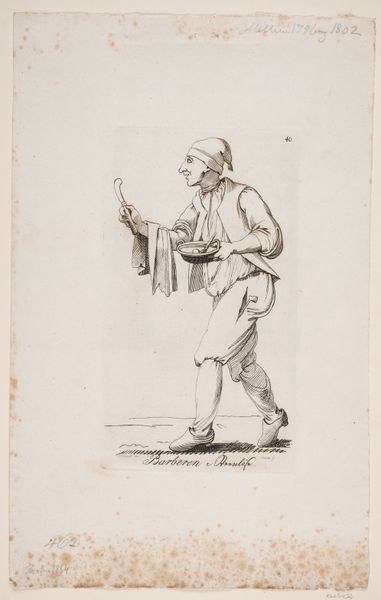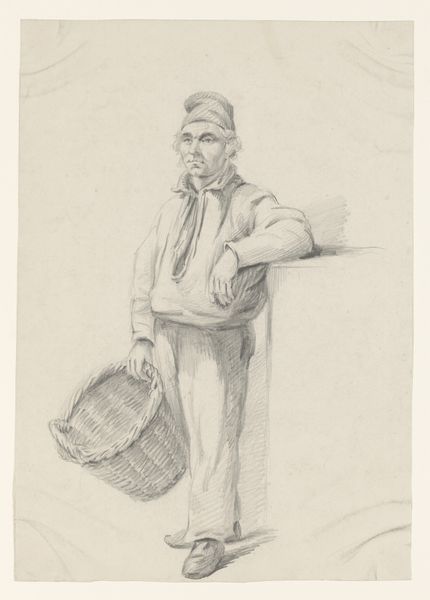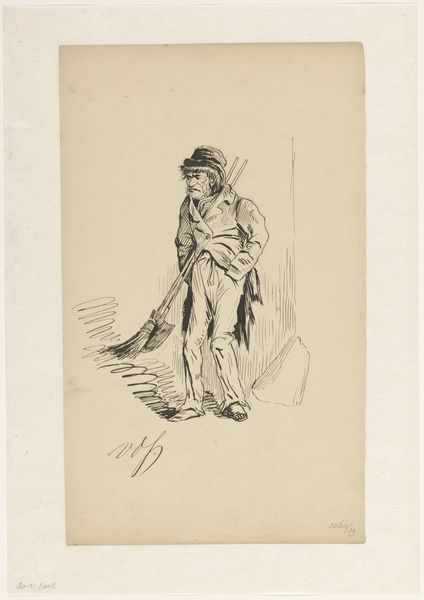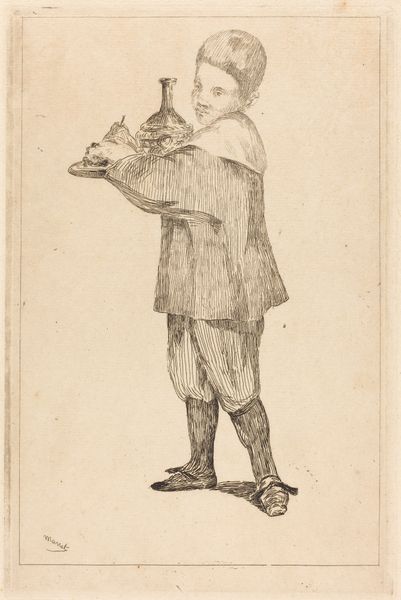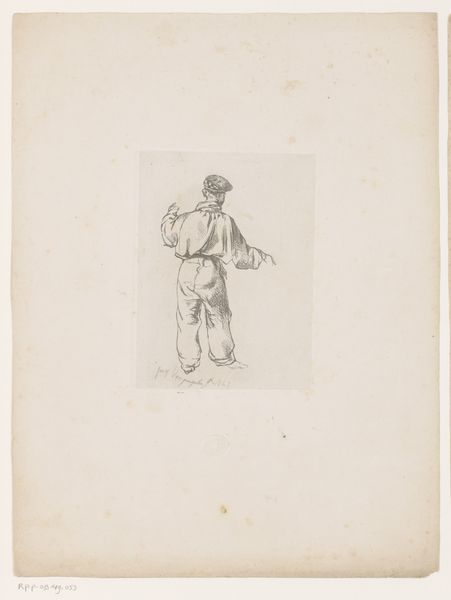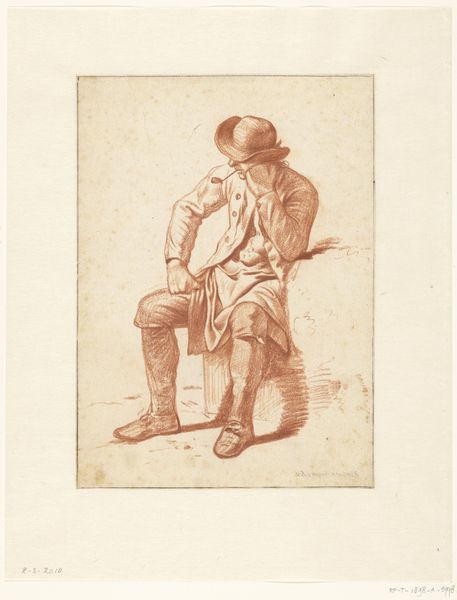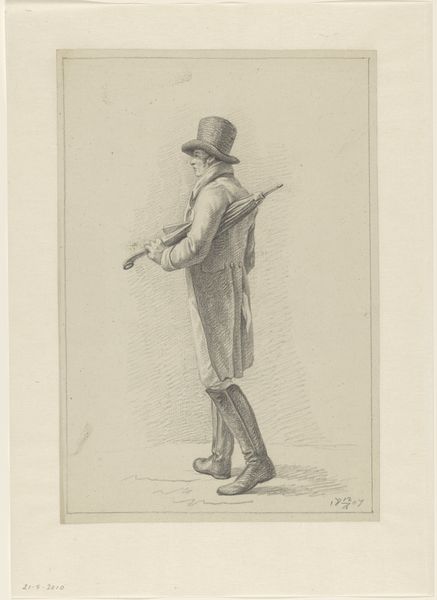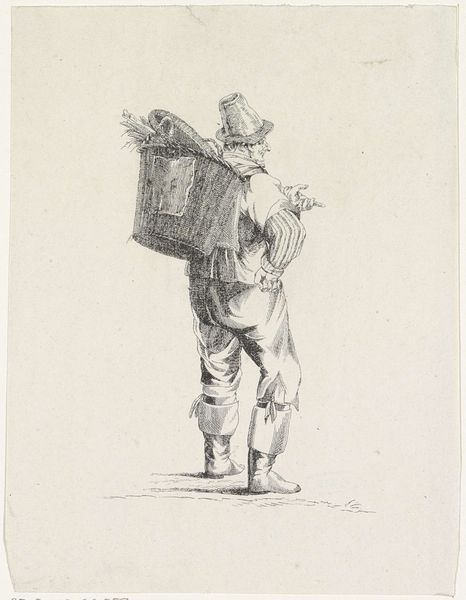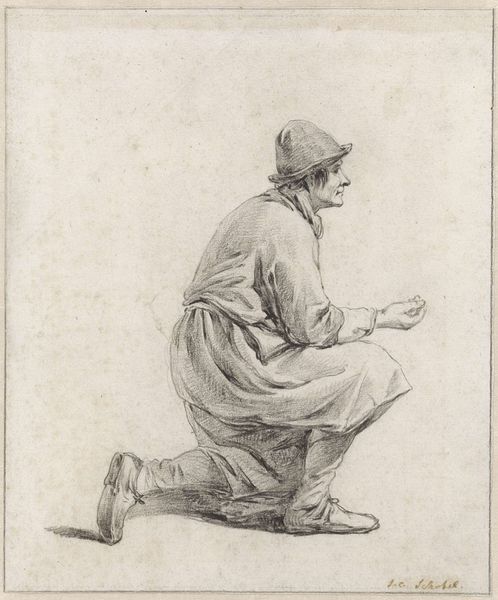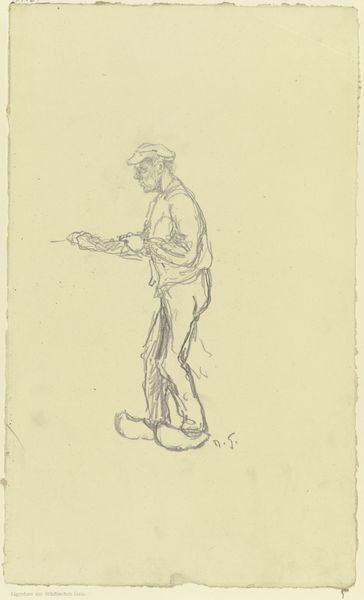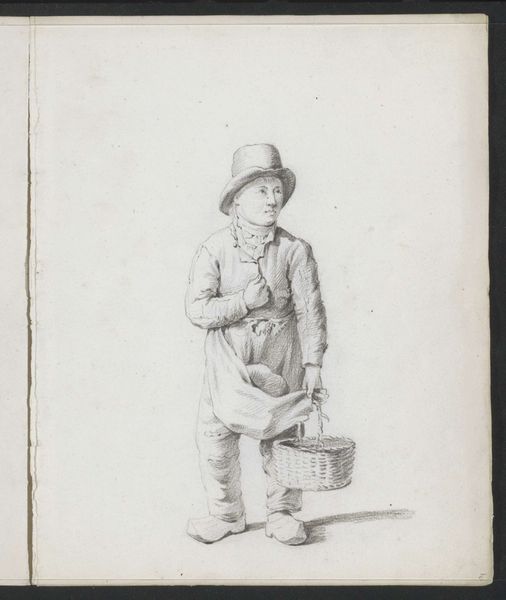
drawing, print, engraving
#
drawing
#
neoclacissism
# print
#
pencil drawing
#
genre-painting
#
engraving
Dimensions: 238 mm (height) x 160 mm (width) (plademaal)
Curator: Let's spend some time discussing Ernst Meyer's "En romersk opvarter," or "A Roman Waiter," which dates from between 1797 and 1861, presently housed at the SMK, the National Gallery of Denmark. Editor: My first impression is of quiet dignity amidst humble circumstances. The limited palette and precise linework evoke a sense of somber restraint, doesn't it? It's so muted, almost like a fading photograph. Curator: Absolutely. This work fits neatly within the Neoclassical movement, where we see a renewed interest in the classical world and a focus on order, clarity, and rational thought. These artistic principles mirror larger societal shifts occurring, like rising class awareness and calls for political reform in many European nations. The genre painting style also brought a fresh interest to everyday life. Editor: Thinking about that renewed interest, this server embodies both the personal labor and larger systematic servitude. Considering its time period, who exactly *is* depicted here, and who had access to being portrayed in artworks like this? Does his pose hint at subjugation, or perhaps at pride in labor? Is there an intention behind depicting this individual rather than somebody of power or notoriety? Curator: Meyer's choice of subject could be interpreted as a subtle commentary on social structures of the time. It raises interesting questions about the dignity of labor and representation in art, doesn’t it? Editor: And even today, the artwork calls us to question labor exploitation. The engraving medium itself has significance too – cheaper reproduction helped the piece reach wider audiences, enabling discourse about labor standards. It gives the working classes access to engage in conversation surrounding class themes, such as inequity and exploitation. Curator: An astute observation! "A Roman Waiter" serves as more than just a snapshot of a man at work. Meyer uses it as a powerful vehicle for exploring the socio-political landscape of the era. Editor: Yes, and through that lens, we can use this piece of art as a starting point for exploring themes relevant to modern audiences, allowing for intersectional perspectives that consider the legacy of labor rights, societal imbalances, and exploitation within current society. I keep thinking about today's gig economy and precarious labor contracts. Curator: Considering all our new insights, I find myself rethinking my perspective of what this simple work conveys. Editor: Precisely. It highlights that we still have much to unpack when examining power dynamics and their continuing effects today.
Comments
No comments
Be the first to comment and join the conversation on the ultimate creative platform.
